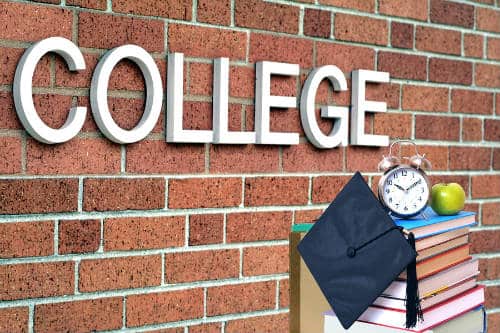There are seven federally recognized “work colleges” in America where students can earn while they learn.
If you get into one of these colleges, you’ll be happy that your tuition is either free or very low compared to the vast majority of U.S. colleges and universities, where total annual costs can top $50,000 annually.
Work colleges have been around for over 150 years. But they’re growing even more popular as students grapple with rising tuition and other exploding higher education expenses.
List of Work Colleges
In my book, College Secrets, I describe the seven work colleges that most U.S. students (and their parents) have never heard of, but should definitely be familiar with: Alice Lloyd College in Pippa Passes, KY; Berea College in Berea, KY; Blackburn College in Carlinville, IL; College of the Ozarks in Point Lookout, MO; Ecclesia College in Springdale, Arkansas, Sterling College in Craftsbury Common, VT; and Warren Wilson College in Swannanoa, NC.
A few highlights of some of these work colleges:
Alice Lloyd, Berea, and College of the Ozarks don’t charge students tuition. The other work colleges offer low-to-moderately priced tuition and other financial aid.
All students at Alice Lloyd College are required to work at least 10 hours per week in exchange for free tuition. If students need additional aid to cover room and board, they can work up to 20 hours per week. Jobs are assigned based on a student’s own preferences and prior work experience.
Full Tuition Scholarships Offered
College of the Ozarks requires students to work 15 hours a week plus two 40-hour workweeks during the year. The school provides all students with full-tuition scholarships and grants.
Each year, College of the Ozarks receives about 4,000 applications and admits roughly 300 to 350 students for the fall term. The school also routinely has a waiting list of students vying to be accepted. Applicants are chosen on the basis of financial need, academics, leadership, and service.
While 71% of all U.S. college grads wind up with debt, only half of those who attend work colleges have student debt upon graduation. And when they do, it’s usually about one-third to one-half of what their peers at other institutions have.
That’s a huge gap and one that makes work colleges particularly attractive, given that the typical college grad in the U.S. now comes out of school with $33,000 in student loans.
According to the Work Colleges Consortium, school programs vary from campus to campus.
But they all have several things in common. For starters, work colleges mandate that in exchange for free or reduced tuition, students must engage in labor activity, usually between 10 and 15 hours of work per week.
These programs also teach students the importance of service, as well as leadership skills and the ability to juggle multiple priorities, such as school and work.
‘Work Levels the Playing Field’
“No students can buy their way out of the work program. That is not an option. So the work levels the playing field,” says Robin Taffler, Executive Director of the Work Colleges Consortium.
According to Taffler, students at work colleges run all the schools’ institutional functions.
“Students do gardening on school grounds, they run the IT desk, handle electrical work and plumbing repairs, and they even build all the buildings at the College of the Ozarks,” Taffler said, in an interview for College Secrets.
“They’re trained firefighters,” she adds. “They do billing and accounts payable. They work in the President’s office. They do research and organize events. At Berea College, students manage the forests, they take care of livestock and work in the cafeteria and manage food services. Students at work colleges literally do everything.”
Because work itself is core to the schools’ philosophy, it is also integrated into the academic structure. There are Deans of Work, students get evaluated on their work, and students can even be kicked out of work colleges if their work is not up to snuff.
“It’s very different from federal work study, which is an optional, need-based program,” Taffler notes.
“At Work Colleges, 100% of our students work for all 4 years. They graduate with real work experience,” Taffler says. “They are sought-after by employers because they know how to show up for work, they have basic workplace skills, as well as more advanced, sophisticated skills in various areas.”
There are more than 2,500 non-profit four-year institutions of higher learning in America.
The seven schools in the Work Colleges Consortium may not have the name recognition of schools such as Stanford, MIT or Princeton. But employers love work college graduates nonetheless.
So for ambitious students with a good work ethic, as well as those who’d like to gain practical experience while in school, work colleges offer a valuable, affordable educational option – as well as a solid platform for launching one’s career.










